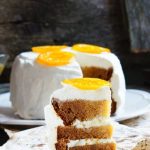Are you looking to learn how to decorate a cake in fondant? Fondant is a versatile and popular choice for cake decorating, allowing for beautiful and intricate designs. In this article, we will cover the essential tools and materials needed, as well as step-by-step guides for preparing the cake, rolling out the fondant, covering the cake with precision, adding decorative touches, troubleshooting common issues, and finishing touches for a professional look.
Fondant is a type of icing that is smooth, pliable, and can be molded into various shapes and designs. It has become popular in cake decorating due to its ability to create a flawless finish on cakes, making it a favorite among professional bakers and home decorators alike. Whether you’re looking to add elegant detailing or fun and whimsical designs to your cakes, fondant provides endless possibilities for creativity.
In this comprehensive guide, we will provide tips on how to use fondant for decorating cakes. We’ll cover everything from the basics of working with fondant to troubleshooting common issues that may arise during the decorating process. Whether you are new to working with fondant or looking to improve your skills, this article will give you the confidence and know-how to create stunning decorated cakes using fondant.
Tools and Materials
When it comes to decorating a cake with fondant, having the right tools and materials is essential for achieving professional-looking results. Here are some of the must-have supplies you’ll need to work with fondant:
1. Fondant: Of course, the most important supply for working with fondant is the fondant itself. You can find pre-made fondants in various colors at your local craft store, or you can make your own from scratch using marshmallows and powdered sugar.
2. Rolling Pin: A smooth, non-stick rolling pin is crucial for rolling out fondant to the right thickness and size for covering your cake.
3. Cornstarch/Powdered Sugar: To prevent the fondant from sticking to your work surface, dusting it with cornstarch or powdered sugar is necessary.
4. Fondant Smoother: This tool is used to help smooth out any air bubbles and wrinkles when covering the cake with fondant.
5. Cutting Tools: Small sharp knives or pizza cutters are needed for trimming excess fondant and cutting out shapes and designs.
6. Edible Glue/ Piping Gel: These are used to adhere decorations and embellishments onto the fondant-covered cake.
By ensuring that you have these essential supplies on hand, you’ll be well-equipped to tackle the task of decorating a cake in fondant.
Now that we’ve covered the necessary tools and materials, let’s move on to discussing how to actually prepare your cake before applying the fondant.
Preparing the Cake
Before applying fondant to a cake, it is essential to properly prepare and ice the cake to ensure a smooth and professional finish. When working with fondant, the surface of the cake should be as even and flawless as possible. Start by leveling the top of the cake with a serrated knife to create an even base for the fondant. This will prevent any lumps or bumps from showing through the fondant.
Next, apply a thin layer of buttercream or ganache on the top and sides of the cake to seal in any crumbs and create a smooth surface for the fondant to adhere to. Use a piping bag or offset spatula to evenly spread the icing, making sure it is level all around.
To achieve crisp edges on your fondant-covered cake, use a sharp knife or pizza cutter to trim away any excess icing from the sides of the cake. This will create clean lines and ensure that the fondant has a neat and polished appearance once applied.
By following these tips for prepping and icing your cake before applying fondant, you will create a flawless canvas for decorating with this versatile and impressive medium.
| Tips for Prepping | Steps for Icing |
|---|---|
| Leveling the top of the cake | Applying a thin layer of buttercream or ganache |
| Using a sharp knife to trim excess icing | Evenly spreading the icing with a piping bag or offset spatula |
Rolling Out Fondant
When it comes to decorating a cake in fondant, one of the most crucial steps is rolling out the fondant to the right thickness. This ensures that the fondant can be smoothly draped over the cake without tearing or stretching too thin. Here’s a step-by-step guide on how to roll out fondant to achieve that perfect thickness.
Prepare Your Work Surface
Before you start rolling out your fondant, it’s important to prepare your work surface. Dust your countertop or pastry mat with powdered sugar or cornstarch to prevent the fondant from sticking. Make sure your hands are clean and dry before handling the fondant to avoid any unwanted marks or smudges.
Knead the Fondant
Take your pre-packaged fondant and knead it until it becomes pliable and smooth. This will help eliminate any air bubbles and make the fondant easier to work with. If your fondant feels too stiff, you can also warm it up by microwaving for a few seconds or kneading in a small amount of vegetable shortening.
Rolling Out the Fondant
Once your work surface is prepared and your fondant is kneaded, lightly dust your rolling pin with powdered sugar or cornstarch. Begin rolling out the fondant from the center outward, rotating it as you go to ensure an even thickness. Aim for a thickness of about 1/8 inch, which is ideal for covering cakes without being too thick or too thin.
By following these steps for rolling out fondant, you can ensure that you have achieved the perfect thickness for covering your cake seamlessly and beautifully. With this foundation in place, you’ll be ready to move on to the next steps of covering the cake and adding decorative elements as you create a stunning masterpiece using fondant.
Covering the Cake
When it comes to decorating a cake in fondant, covering the cake with the fondant is a crucial step to achieving that flawless, professional finish. Whether you’re a beginner or an experienced baker, using these techniques will help you cover your cake smoothly without any air bubbles or wrinkles.
Prepping the Cake
Before applying the fondant, it’s essential to ensure that your cake is properly prepped. Make sure your cake is level and has been iced smoothly with buttercream or ganache. This provides a smooth base for the fondant and prevents any bumps or lumps from showing through.
Rolled Fondant Thickness
Rolling out the fondant to the right thickness is key to avoiding air bubbles and wrinkles. Aim for about 1/8 inch thickness when rolling out the fondant. Using spacers or rolling pin rings can help maintain an even thickness throughout. If the fondant is too thick, it can weigh down on the icing and cause bulges; if it’s too thin, it may tear when applying on the cake.
Application Techniques
When applying the rolled-out fondant onto your cake, work quickly but carefully. Gently lift the fondant using a rolling pin and drape it over the cake. Smooth out any air bubbles by gently pressing them towards the edge of the cake using a smoothing tool or your hands. Starting from the top and gradually working down the sides will help prevent any creases from forming.
By following these techniques for covering a cake with fondant, you’ll be able to achieve a flawless finish that looks polished and professional. Taking the time to prep your cake properly, roll out the right thickness of fondant, and apply it diligently will result in a beautifully decorated cake that will impress everyone at your next special occasion.
Adding Decorations
One way to add designs and patterns is by using fondant cutters. These come in a variety of shapes and sizes, allowing you to create intricate designs on your cake. From flowers and leaves to stars and hearts, fondant cutters can be used to make beautiful decorations that will impress your guests.
Another popular technique for adding embellishments is by using silicone molds. These molds come in various designs such as lace, pearls, and geometric patterns. Simply press the fondant into the mold, remove any excess, then place the design onto your cake for an elegant touch.
Additionally, edible paint or food coloring markers can be used to hand-paint designs directly onto the fondant. This is a great way to add personalized messages or intricate details that are specific to your event or theme. With these options for adding decorations, you can really let your imagination run wild and create a one-of-a-kind masterpiece.
Remember that practice makes perfect when it comes to decorating with fondant. Don’t be afraid to experiment with different techniques until you find what works best for you. So take the opportunity to unleash your creativity and transform your cakes into stunning works of art using these simple tips for adding decorations with fondant.
| Decoration Technique | Description |
|---|---|
| Fondant Cutters | Allow for creating intricate designs such as flowers, leaves, stars, etc. |
| Silicone Molds | Offer various designs like lace, pearls, and geometric patterns for an elegant touch. |
| Edible Paint/Food Coloring Markers | Perfect for hand-painting personalized messages or detailed designs directly onto the fondant. |
Troubleshooting
When working with fondant, it’s not uncommon to run into a few issues along the way. However, with the right tips and techniques, these common problems can be easily resolved. Here are some of the most common issues when working with fondant and how to fix them:
1. Cracking: Fondant can sometimes develop cracks, especially if it becomes too dry. To fix this issue, gently knead the fondant to warm it up and make it more pliable. If the cracking is severe, you may need to remove the affected area and patch it with fresh fondant.
2. Sticky Fondant: On the other hand, if your fondant is too sticky and difficult to work with, try dusting your work surface with cornstarch or powdered sugar. This will help prevent sticking without drying out the fondant.
3. Elephant Skin: When fondant develops a rough, wrinkled appearance resembling elephant skin, it’s typically due to trapping air pockets underneath during application. Use a fondant smoother or your hands to gently smooth out any wrinkles and release trapped air.
Remember that practice makes perfect when working with fondant. Don’t be discouraged by these common issues – instead, use them as learning opportunities to improve your cake decorating skills in using this versatile medium.
By following these troubleshooting tips, you’ll be better equipped to handle any challenges that arise while working with fondant and create beautifully decorated cakes that are sure to impress.
Finishing Touches
When it comes to decorating a cake in fondant, the finishing touches can truly make all the difference in achieving a polished and professional-looking result. Here are some final tips to take your fondant cake to the next level:
- Smooth Edges: Once the fondant is applied to the cake, use a fondant smoother to gently press and smooth the edges for a clean and seamless finish.
- Dusting and Shaping: Dusting the work surface with powdered sugar or cornstarch can prevent sticking while rolling out fondant. Additionally, shaping tools can be used to create intricate designs and details on the fondant itself.
- Color Coordination: Pay attention to color coordination when adding decorations. Whether using pre-made fondant decorations or creating your own, make sure they complement the overall design of the cake.
In addition to these final tips, it’s important to consider proper storage and transportation of your finished fondant cake. Keeping it in a cool, dry place away from direct sunlight will help preserve its appearance until it’s ready to be served.
Remember that practice makes perfect when it comes to working with fondant, so don’t be afraid to experiment with different techniques and designs. With patience and creativity, you can achieve stunning results when decorating a cake in fondant.
Conclusion
In conclusion, decorating a cake with fondant can be a fun and creative process that results in stunning, professional-looking confections. Fondant offers a smooth and sleek finish that allows for intricate designs and vibrant colors, making it a popular choice for cake decorators of all skill levels. With the right tools, materials, and techniques, anyone can learn how to decorate a cake in fondant and impress friends and family with their beautiful creations.
While working with fondant may seem intimidating at first, proper preparation and patience can lead to successful results. By following the step-by-step guide for rolling out fondant and covering the cake without air bubbles or wrinkles, even novice decorators can achieve a flawless finish.
Additionally, adding decorations such as designs, patterns, and embellishments is where the true artistry comes into play. Whether it’s simple shapes or intricate lace-like detailing, there are endless creative possibilities when decorating with fondant.
As with any new skill, practice makes perfect when it comes to working with fondant. It’s important to remember that troubleshooting common issues that may arise is all part of the learning process.
From cracks and tears to sticking or drooping fondant, there are solutions to every problem to ensure a beautifully finished product. With some dedication and creativity, anyone can master the art of how to decorate a cake in fondant and create show-stopping desserts for any occasion.
Frequently Asked Questions
How Do You Put Fondant on a Cake for Beginners?
Putting fondant on a cake for beginners requires some basic steps. First, you need to prepare the cake by applying a thin layer of buttercream or jam to help the fondant adhere. Then, roll out the fondant to the desired thickness and carefully drape it over the cake, smoothing out any wrinkles or air bubbles.
How Do You Put Fondant Decorations on a Cake?
Adding fondant decorations to a cake is a fun way to customize its appearance. To do this, you can apply a small amount of water or edible glue to the back of the fondant decoration before gently pressing it onto the cake. Be sure to plan out the placement of your decorations beforehand for a cohesive look.
What Do You Put on a Cake Before Fondant?
Before applying fondant, it’s important to have a smooth surface on your cake. After baking and cooling, you can spread a thin layer of buttercream or ganache on the cake to create a base for the fondant. This helps provide an even surface and adds flavor and moisture to complement the fondant covering.

Welcome to my blog about home and family. This blog is a place where I will share my thoughts, ideas, and experiences related to these important topics. I am a stay-at-home mom with two young children. I hope you enjoy reading it! and may find some helpful tips and ideas that will make your home and family life even better!





